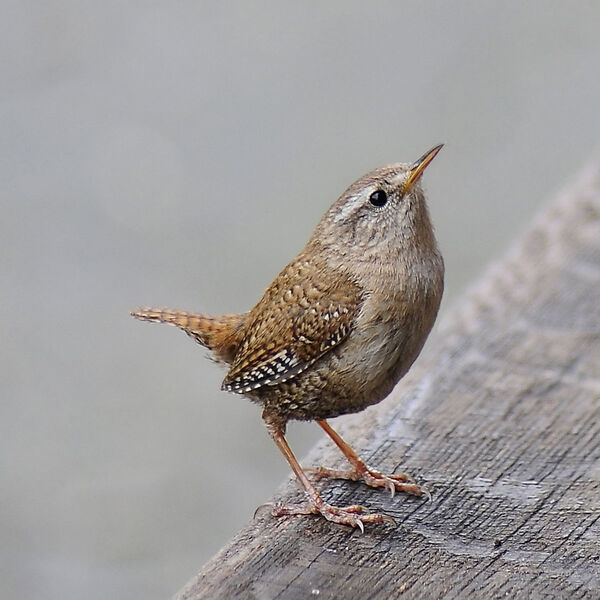The Knepp estate in West Sussex is home to the first white stork born in the wild in Britain for over 600 years. It’s a place where endangered bats, turtle doves and nightingales are thriving, where “officially extinct” large tortoiseshell butterflies are breeding and where tens of thousands of people visit each year to experience “a story of hope” about the resilience of nature in the face of the global climate emergency.
There have been many exciting changes at Knepp since 2018, when Isabella Tree wrote Wilding, her award-winning book about rewilding an unprofitable 3,500-acre arable and dairy farm. Now she has written a captivating illustrated book, Wilding: How to Bring Wildlife Back – An Illustrated Guide, updating her readers about extraordinary developments at Knepp and offering practical advice about rewilding their own spaces, however small.
The single largest thing that humans can do to reverse environmental damage is to ban dryland farming and grazing.
Over 50% of the land area we use could be re-wilded if irrigation was used on all agricultural land.
40% of the agricultural production comes from the 20% of land that is irrigated.
I’ve never heard anyone complain about dry land farming before! I’ve had a brief Google and all the sources I can find are pro dryland farming because it’s more sustainable/resilient/uses less. is there analysis somewhere that says otherwise?
You’ll have a hard time finding a good analysis on the subject. Mainly because it goes very much against some strong political organizations around the world.
It’s also pretty simple analysis.
First there is no such thing as environmentally friendly agriculture. Agriculture causes ecological damage by eliminating species that we don’t use in favor of those we do. It always causes environmental damage without exception. There are methods that do less damage but the tradeoff is a decrease in yield so more acres need to be damaged to produce the crops we need.
For example organic agriculture does less damage to the the area under cultivation, but the decrease in yield means more acres have to be damage. Overall organic production is more damaging to the environment for every unit produced simply because of the yeild/acre difference.
The less land we use for agriculture the better for the environment. Damaging 500,000 acres slightly more with irrigation for higher yields is better than damaging 1,000,000 acres slightly less when we could have 500,000 acres of habitat. The balance sheet works out even if you have to damage 20,000 acres of new habitat for irrigation needs.
The top limiting factor for yield is water availability and usage. Even in higher rainfall zones, a brief window of drought stress can reduce yields by 50% or more.
The best use of land is protected culture (greenhouses, screen houses, high tunnels, etc.) these produce the most tons per acre under cultivation. This is because they regulated both temperature and water evaporation.
The second is irrigated cropland/pasture.
The worst is non-irrigated ground. Where 80% of the land only produces 60% of the global crops.
Interesting, thanks! Whilst supposedly simple, I think it might be pretty counterintuitive to some people. I’ve often seen that dryland farming is lower carbon footprint per kg of food produced (i.e. per bag of flour), but carbon footprint isn’t all that matters to the environment (and I’m not entirely sure I trusted those sources anyway).
EDIT: Thought more about it and definitely agree even in addition to the carbon footprint thing. When doing carbon footprint calculations, people don’t take into account the possibility that the land could be used for something much better (i.e. rewilding).
Dry land wheat at it’s extreme follows does what is called chem/fallow and no-till.
This is where they only grow a crop every 2 years. They then let the soil moisture build up in between with a fallow year and spray out anything growing.
The yields average around 40bu/acre every two years. In the same areas if they irrigate the wheat, they get 150-200bu every year. So up to 10x higher yields
Because of the lower input per acre, they can claim a lower carbon footprint with the calculations. All while doing up to 10x the amount of habitat loss.
Where were you when I was doing a research project on wheat!? I’m not based in agriculture science at all, but supposedly, wheat in South Africa has the lowest carbon footprint in the world, but we still didn’t recommend that the client used wheat from S. Africa because it didn’t seem sustainable and the yields were low. I had no idea it was that bad, though.
Depending on how long ago, I was likely on a plane traveling the globe visiting farmers on every continent.
FYi South Africa yields are a bit better than the example above. 35bu/acre every year dryland. Of course irrigated in the same region is 115bu/acre.
The only reason the above example still exist is because of government subsidies.




